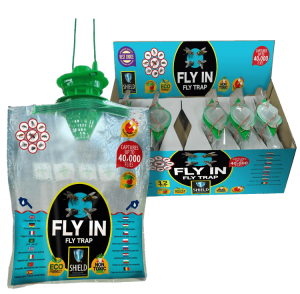
The little fire ant Wasmannia auropunctataGal Cohen – Expert pest control consultant The little fire ant, as her name suggests, is very “little”, only about
Home » Professional Information » The German Cockroach – The Full Guide

The German cockroach (Blattella germanica)
Gal Cohen – Expert pest control consultant
It usually arrives as a hitchhiker, mainly in different food deliveries, inside cases of bottles, cardboard boxes, and more. It likes moisture and heat, so it can mostly be found in or around electrical appliances, and after reproduction, “cockroaches will wonder” all around the kitchen in search of food. Once it decides to settle down in your house, it will be difficult to get rid of, and the usual pest control measures will be useless. We are here to explain and help.
The German cockroach is one of the most common cockroaches in the world. Its character and behavior are different than the American cockroach, which is even more widespread than it and known as a roach, the same one which dares to surprise us in one of our rooms, and doesn’t hesitate to land after flying in from the outside through one of the shutters.
So lets get familiar with that cockroach, the German cockroach.
Habitat: mainlyin moist and warm areas, electrical appliances, engines, cracks, crevices, and hideouts around food. Movement: running. Rarely flies. Body length: up to about 1.5 cm. Egg capsules of about 6 mm. Life cycle: a missing metamorphosis. A generation evolves within about 3 months, depending on conditions and temperature. Life span of about 10 months. The female lays an egg capsule with about 35-40 cockroaches per capsule, and produces new egg capsules 7 times a year.
Food: omnivorous scavengers. Feed on human food. Feed also on other cockroaches and their feces.
Seasons: mainly spring and summer because of the temperature. Inside buildings, activity will occur all year round.
Places to exterminate: kitchens (mainly engines, electrical appliances and other warm and humid places), food storages, cracks, crevices and hideouts around food.
The German cockroach doesn’t usually transmit diseases. However, since its presence in the house constitutes a less hygienic environment, it can contain a wide range of pathogenic microorganisms such as bacteria and viruses. The cockroach feeds on human waste, including feces, and therefore can transfer pathogenic microorganisms from place to place on its body, to food supplies or work surfaces,

The little fire ant Wasmannia auropunctataGal Cohen – Expert pest control consultant The little fire ant, as her name suggests, is very “little”, only about


The Asian tiger mosquitoGal Cohen – Expert pest control consultant The Asian tiger mosquito is an invasive species native to the tropical areas of Asia,

SHIELD offers an exclusive opportunity for distributors seeking to grow and expand their business.
Our products have high year-round demand and sell at various convenient stores.

SHIELD offers an exclusive opportunity for distributors seeking to grow and expand their business.
Our products have high year-round demand and sell at various convenient stores.
User Agreement | Privacy
All rights reserved